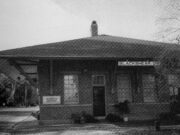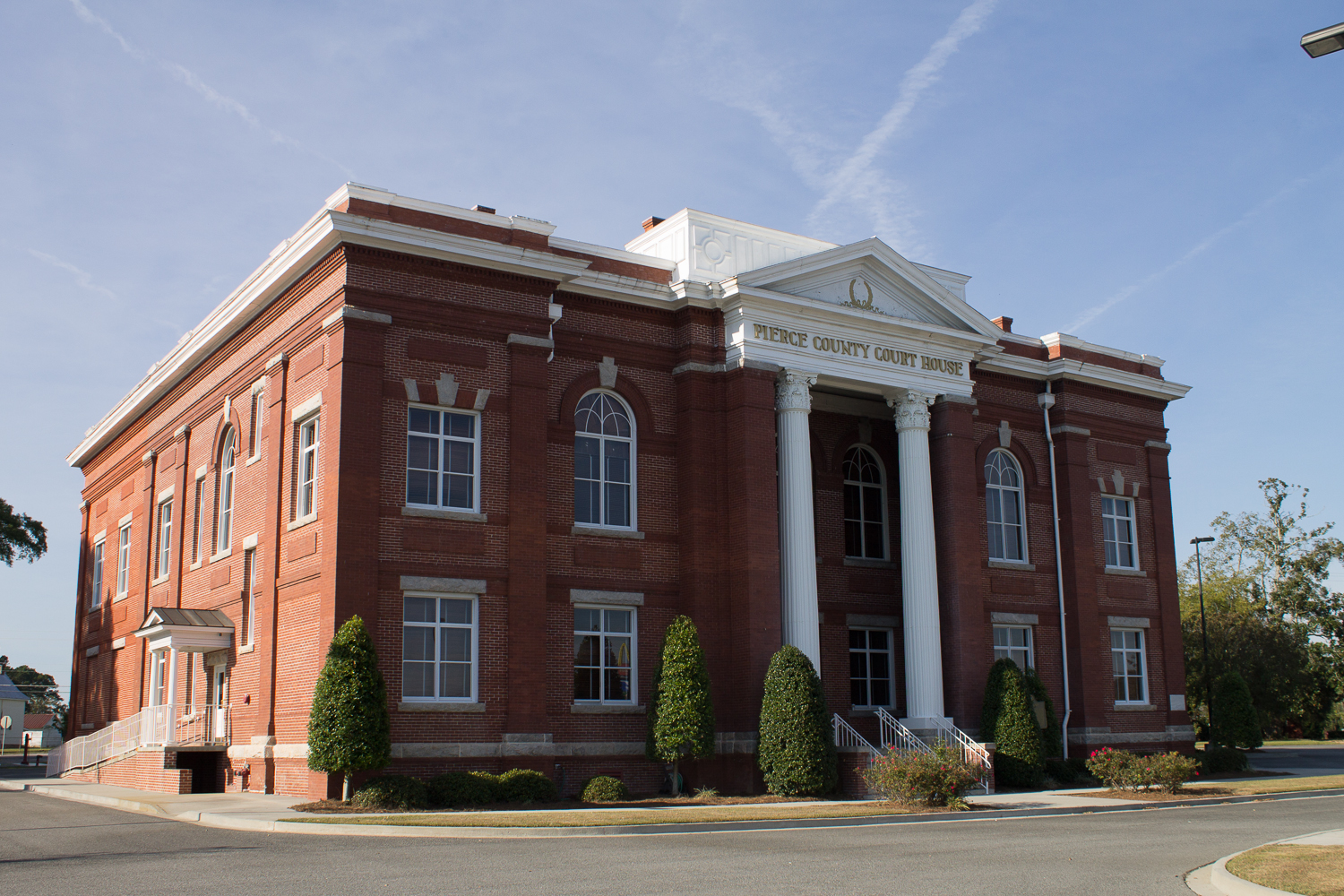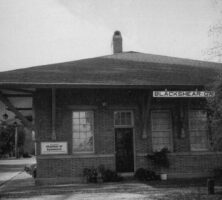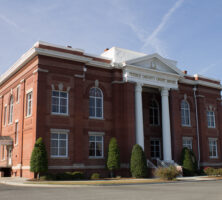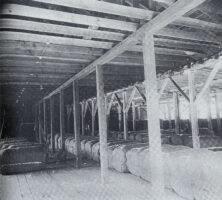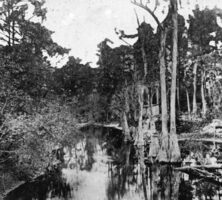Covering 343 square miles in southeast Georgia, Pierce County is the state’s 120th county, created in 1857 from Appling and Ware counties. It was named for Franklin Pierce, the fourteenth president of the United States and an anti-abolitionist from New Hampshire.
The land was originally held by Creek Indians who were expelled from their territory by General David Blackshear under orders from the U.S. government after the start of the War of 1812 (1812-15). (Blackshear also directed the building of a military road through the area in 1814-15.) Parts of Pierce County were later appropriated to form Bacon County, in 1914, and Brantley County, in 1920.
The county seat is Blackshear, which was named by the state legislature before the town was created. In 1858 those responsible for choosing a site decided to build the community around a depot constructed in 1857 by the Atlantic and Gulf Railroad. The first courthouse in Blackshear was built in 1858. When it burned down in 1875, a new courthouse was constructed. This building, replaced in 1902 by the current courthouse, is now a private residence. Remodeled in the 1970s and provided with an addition in 1975, the current courthouse was placed on the National Register of Historic Places in 1980. In addition to Blackshear, two other incorporated towns, Offerman and Patterson, are found in Pierce County.
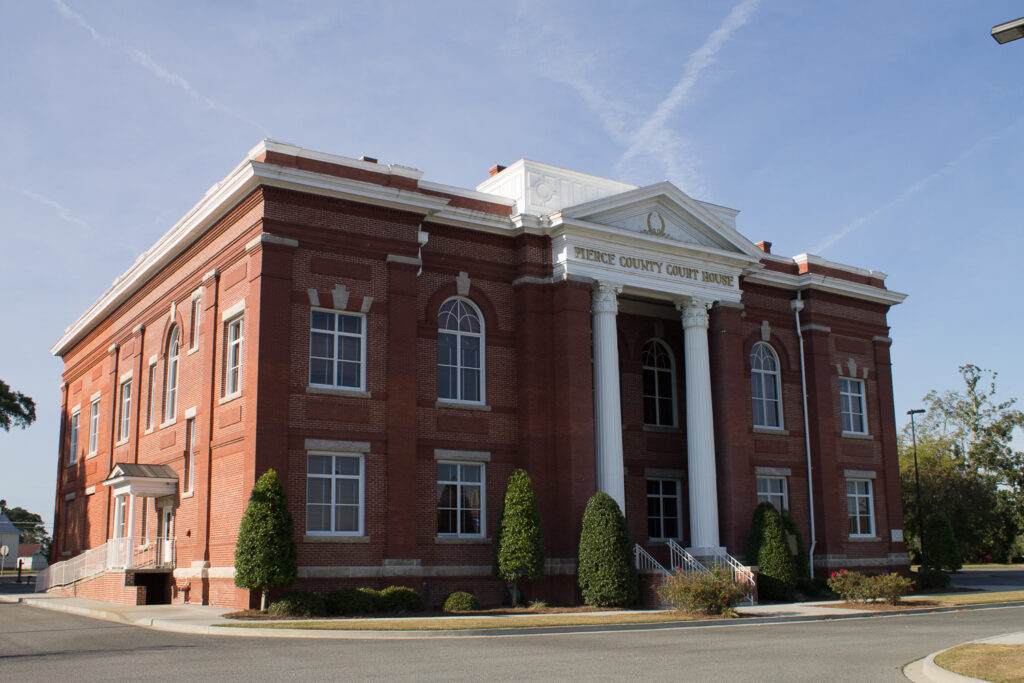
The Civil War (1861-65) began soon after Pierce County was formed, with the result that many of its healthy young men went to war before they could join in the formation of communities. The few townspeople who remained in the county’s 333 households found themselves hosts to a temporary Confederate prisoner-of-war camp from November 1864 through January 1865. Nearly 5,000 Union captives were brought to Blackshear to prevent their release by Union general William T. Sherman as he marched through the state; the prisoners were subsequently sent on to Savannah for the same reason.
During the nineteenth century, agriculture was the primary occupation in Pierce County. The county’s lush pine forests were tapped for both timber and turpentine. The timber industry brought new residents to work in the county’s forests and sawmills and contributed to its growth. Businesses developed to serve those who came, and railroad lines were brought in to transport people and products. Cotton was also a major product until the 1920s, when a boll weevil infestation devastated much of Georgia’s harvest. Many of Pierce County’s cotton planters shifted to tobacco culture, which was the county’s major agricultural product from the 1920s until late in the twentieth century.

Blackshear Presbyterian Church, built in 1874, is the oldest Presbyterian church in the county. The Reverend I. S. K. Axson of Savannah (grandfather of U.S. president Woodrow Wilson’s first wife, Ellen Axson) performed the dedication service, and the church’s first pastor, the Reverend Richard Quarterman Way, was a retired missionary from China. Shiloh Primitive Baptist Church and its cemetery, which is the oldest in the county, was first used in the 1830s. Civilians as well as veterans of all American conflicts through the Vietnam War (1964-73) are buried there.
Other historic sites include the Brantley Brick Warehouse. Dating from around 1900, it is one of the oldest brick tobacco warehouses in Georgia and has been converted into retail and office space. The site of the temporary Confederate prison camp is indicated by a historical marker on the outskirts of Blackshear. The Pierce County Jail, built in 1894, was added to the National Register of Historic Places in 1980. Used until the 1920s and garnering the nickname “Hanging Jail” because of its high tower, it was the third of the county’s five jails.

The Heritage Museum, located in the Blackshear Depot, mounts displays pertaining to the lives of the early settlers in the county, with exhibitions on agriculture, church histories, and the Civil War. It also has a large photograph and document collection as well as a genealogical library. The Pierce County Chamber of Commerce is housed in an Atlantic Coast Line Railroad depot, which was added to the National Register of Historic Places in 2000.
The Marian Anderson Library Rosenwald School, in Blackshear, was completed in 1926. This school was one of many Rosenwald schools built in Georgia. Currently used for storage by a local business, it once served as a school for the area’s African American children and housed a collection of books and paintings relating to the African American experience. The collection was moved in the 1950s to the Lee Street Resource Center, which today offers youth mentoring programs.
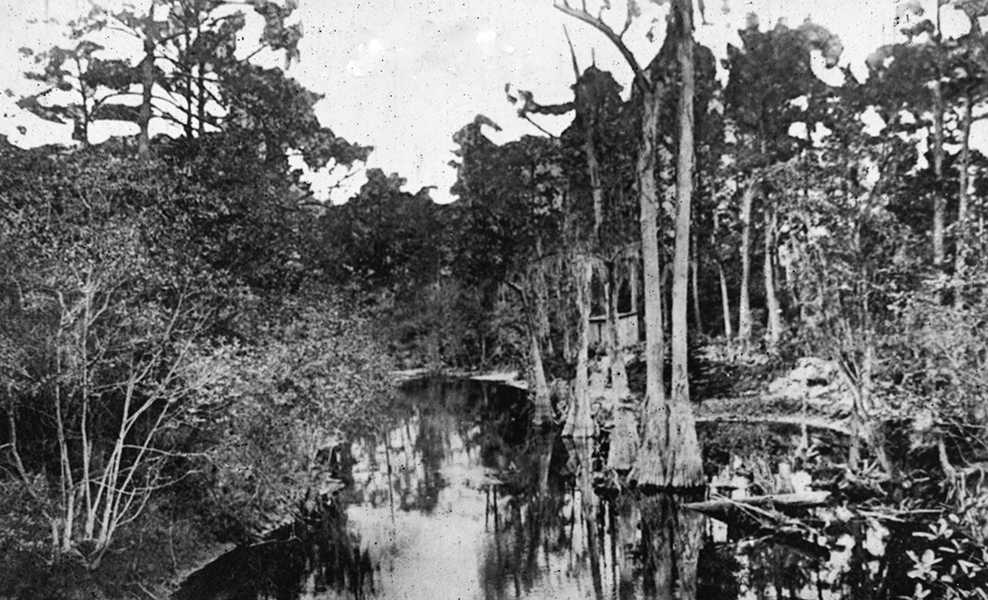
Pierce County shares the Little Satilla Wildlife Management Area with Wayne County.
According to the 2020 U.S. census, the population of Pierce County was 19,716.


